If the basement in your house has a continuous musty smell, you are not the only one. This widespread problem is very frequently due to high levels of humidity which results in the growth of mold, mildew and decay along with other nasty smells. In most cases, a dehumidifier is suggested as the answer to this problem, but does it really resolve the underlying issue?
In this article, we are going to look into how dehumidifiers function, how effective they are in getting rid of musty smells, and if they are really the right option for your basement. So, you will have a very good idea by the time of the reading about the ways to get a fresher and healthier atmosphere in your house back.
Understanding Musty Smells
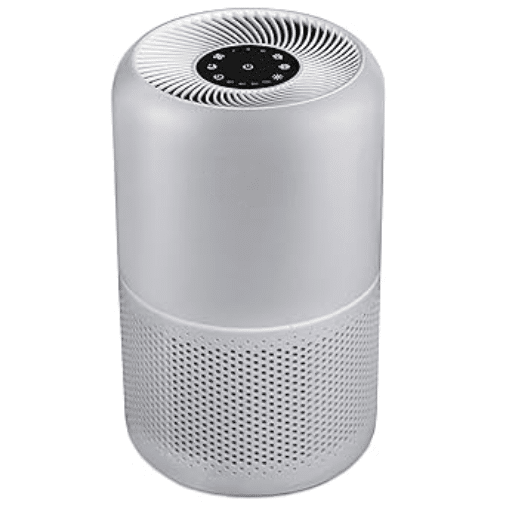
Musty odors are more than just unpleasant—they’re often indicators of underlying moisture and air quality issues in your home. Understanding what causes these smells is the first step toward effectively eliminating them.
What Causes Musty Odor?
The main reason for the musty smell is the presence of mold and mildew, which are the two fungi that would grow in places with excessive moisture, no air circulation, and little sunlight. They decompose the organic matter like wood, cloth, and wallboard, and in the process, they release some gases that are known as microbial volatile organic compounds (MVOCs) that give off the smell of mold or mustiness.
🔍 Primary Causes of Musty Smells:
- Broken pipes and plumbing leaks
- Condensation on surfaces
- Persistent moisture in poorly ventilated areas
- Water infiltration from outside sources
How Humidity Contributes to Musty Smells
The high levels of humidity in the air play a major role in the formation of musty odors as they make a great habitat for fungi-mold and mildew to grow. The more the relative humidity increases such that it goes beyond 60%, the more the surfaces/materials like wood, drywall, and fabric in the air absorb moisture, and thus fungi get the conditions they need to grow.
The humidity cycle that creates musty smells:
- High humidity levels (above 60%) create ideal conditions for fungal growth
- Mold and mildew colonize on damp surfaces
- These organisms release MVOCs as they break down organic materials
- Condensation on cold surfaces provides continuous moisture supply
- The cycle perpetuates without intervention
Common Areas Where Musty Smells Occur
Understanding where musty odors typically develop helps target prevention and treatment efforts more effectively.
| Location | Why It’s Prone to Musty Smells | Risk Level |
|---|---|---|
| Basements | Underground location, poor ventilation, moisture from ground | Very High |
| Bathrooms | High moisture from showers/baths, steam accumulation | High |
| Attics | Poor air circulation, potential roof leaks, temperature fluctuations | High |
| Crawl Spaces | Dark, poorly ventilated, moisture from ground contact | Very High |
| Kitchens | Plumbing leaks under sinks, moisture from cooking | Medium |
| Closets & Laundry Rooms | Damp clothes storage, limited airflow | Medium |
The Role of Dehumidifiers
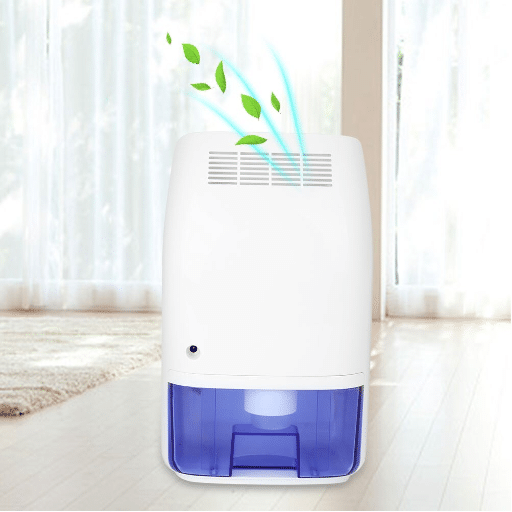
Dehumidifiers are essential for good indoor air quality and also for the elimination of moisture-related problems that lead to unpleasant smells, along with the prevention of their growth. Mold, bacteria, and their odors are the types of things the devices are going to get rid of by absorbing extra humidity from the air.
How a Dehumidifier Works
The process of dehumidifying involves pulling moist air from the area around the appliance, cooling that air in the evaporative coils to let the moisture condense, and finally, the cooled, dried air is sent back. The water that has been taken out of the air is either collected in a water tank or is continuously drained through a hose for uninterrupted operation.
✅ Modern Dehumidifier Features:
- Smart humidity sensors (hygrometers) – Automatic humidity monitoring and control
- Energy-efficient compressors – Reduced electricity consumption with high performance
- Automatic controls – Set-and-forget operation for optimal moisture levels
- Continuous drainage options – Uninterrupted operation without manual emptying
Can a Dehumidifier Get Rid of Musty Smells?
A dehumidifier is an efficient appliance that can remove musty odors by reducing the humidity in the air to be the ideal range of 30-50%. Musty smells usually come from places where the air is wet, such as basements, laundry rooms, or areas without proper ventilation, and that is where mold, mildew, and bacteria are flourishing.
💡 How Dehumidifiers Eliminate Musty Smells:
- Reduce humidity to levels where microorganisms cannot thrive
- Remove moisture that supports mold and mildew growth
- Create an environment inhospitable to odor-causing bacteria
- Prevent future moisture accumulation and odor development
Important: While the dehumidifier has a very important role to play in the odor control process, it’s necessary to combine its usage with cleaning of the affected areas, locating the source of odor, and even fixing leak or water infiltration problems, for best results.
Types of Dehumidifiers for Musty Basements
The market is full of different kinds of dehumidifiers, each with a particular function. Here are the three main types that consumers are primarily interested in:
Refrigerant Dehumidifiers
These are the most popular dehumidifiers for basements because they work very well in warm and humid places. The way it works is that the humidity is cooled off, turned into water, and collected, which is why they are so good at reducing moisture levels that are responsible for musty odours.
Best for:
- Warm basement environments
- High humidity levels
- Year-round use in moderate climates
Limitation: May not work as effectively in colder areas.
Desiccant Dehumidifiers
The opposite of refrigerant dehumidifiers, desiccant ones have a material that absorbs moisture as the air passes through it. They can be used in cool basements where refrigerant dehumidifiers do not perform well.
Best for:
- Cold basement environments
- Low to medium temperature operation
- Year-round odor control
- Areas where refrigerant models struggle
Whole-Home Dehumidifiers
Whole-home dehumidifiers that are designed to connect with the current HVAC systems are considered to be a central humidity control solution. They are perfect for those homeowners who want to deal with moisture issues in a long-term way and not just in one area like the basement.
Best for:
- Complete home humidity management
- Long-term moisture control solutions
- Homes with widespread humidity issues
- Integrated climate control systems
Benefits of Using a Dehumidifier
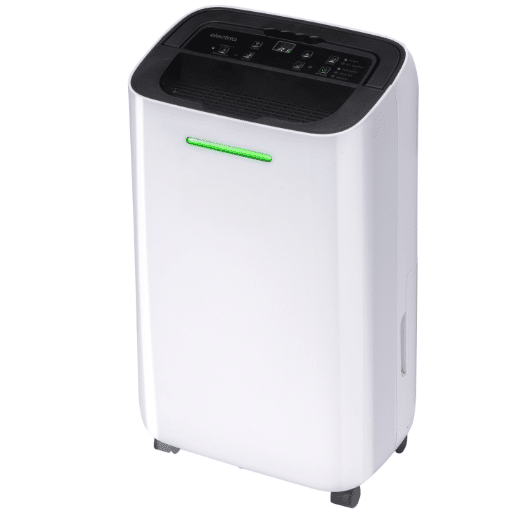
There are multiple benefits to using a dehumidifier, particularly in the areas of indoor air quality and moisture prevention.
Improving Air Quality and Reducing Odors
The use of advanced air purification technologies like HEPA and activated carbon filters has become a typical solution to meet the demand for clean air:
- HEPA filters: Trap very tiny particles like dust, allergens, and pollen
- Activated carbon filters: Eliminate VOCs and bad smells from the air
- Humidity control: Prevents mold growth, a common cause of musty smells
Preventing Mold Growth in Damp Areas
Mold that develops in moist areas is not only a health hazard but also a source of structural problems. According to the Environmental Protection Agency (EPA), mold can easily grow if the humidity level is consistently above 60% in those areas.
🛡️ Prevention Methods:
- Good ventilation: Use exhaust fans in bathrooms and kitchens
- Dehumidifiers: Keep humidity levels at optimal standards
- Immediate leak repair: Fix roofs, walls, or plumbing leaks promptly
- Smart humidity sensors: Monitor real-time moisture levels
- Mold-resistant materials: Use treated wood and mold-inhibiting paints
Allergy Relief in Homes with Musty Odors
The existence of musty smells in living quarters can point to mold and mildew, which are two of the main contributors to indoor allergens. Musty smells tell of microbial volatile organic compounds (MVOCs) generated by molds, which can worsen respiratory problems like asthma and cause allergy symptoms such as sneezing, stuffy nose, and itchy eyes.
Comprehensive solution approach:
- Use dehumidifiers to maintain indoor humidity below 60%
- Install ventilation systems with HEPA filters
- Apply targeted cleaning practices for contaminated areas
- Utilize mold-resistant materials in construction and repairs
Choosing the Right Dehumidifier
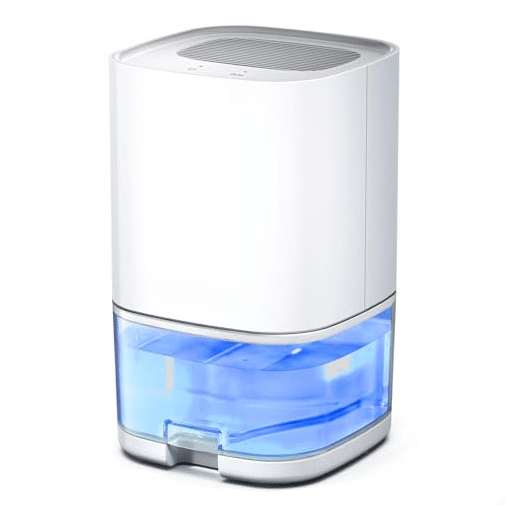
To choose the best dehumidifier for your house, you need to thoroughly evaluate a number of aspects and make sure that the dehumidifier will perform at its best and will be cost-effective.
Factors to Consider Before Buying
| Factor | What to Look For | Why It Matters |
|---|---|---|
| Room Size & Coverage | Small units: <500 sq ft Large units: >1,500 sq ft |
Ensures adequate moisture removal for your space |
| Capacity | Measured in pints per day | Higher capacity for larger or more humid spaces |
| Humidity Levels | Consider your climate and location | Basements and coastal regions need more powerful units |
| Energy Efficiency | Energy Star-rated models | Reduces power consumption while maintaining performance |
| Noise Level | Low decibel ratings | Important for bedrooms and shared living spaces |
| Portability | Wheels, handles, compact design | Easy movement between rooms as needed |
| Smart Features | Humidistats, digital displays, Wi-Fi connectivity | Enhanced control, monitoring, and convenience |
Recommended Dehumidifiers for Musty Smells
Frigidaire FFAD5033W1 50-Pint Dehumidifier
This model boasts an impressive capacity for moisture removal, thus especially suitable for the areas of medium to large size. With superior humidity control and an option for continuous draining, it promises to deliver an uninterrupted performance. Moreover, it has a filter that can be washed to capture dust and allergens and to improve air quality.
Best for: Medium to large spaces with persistent moisture issues
hOmeLabs 4,500 Sq. Ft Energy Star Dehumidifier
This dehumidifier is very effective in eliminating musty smells in large areas and is also rated highly for its efficiency. It has customizable humidity settings, turbo mode for snapping up moisture quickly, and energy-efficient operation, all of which make it a powerful and cost-effective solution.
Best for: Large basements and whole-floor moisture control
Vremi 22-Pint Dehumidifier
This small and portable unit is perfect for use in small spaces. It works very well in getting rid of moisture and musty smells in the room. Apart from the attractive, contemporary design, it also offers such features as auto-defrost and a quiet operation mode, making it very suitable for bedrooms or other living areas shared with others.
Best for: Small rooms, closets, and personal spaces
GE APER50LZ 50-Pint Smart Dehumidifier
Using smart technology, the dehumidifier has Wi-Fi compatibility and the option for users to keep track of and change the humidity levels by means of a mobile app. It is meant for large areas, thus providing user-friendliness along with great moisture control power.
Best for: Tech-savvy users wanting remote monitoring and control
Midea Cube 20-Pint Dehumidifier
Connecting the dots between the clever, stackable water reservoir design and the Midea Cube’s performance is the thought of long runtime and superior moisture extraction. Its small footprint and smart features make it a perfect fit in basements or just any place that gets moist.
Best for: Compact spaces requiring efficient moisture control
Maintenance Tips for Optimal Performance
Proper maintenance ensures your dehumidifier operates at peak efficiency and has a longer lifespan. Follow these essential maintenance guidelines:
1. Regularly Clean the Air Filter
Every two weeks, the air filter should be cleaned in order to assure that the airflow is at its best and the operation is efficient. A dirty filter may cause the effect of dehumidifier to be as much as 30% less than it could be. For cleaning instructions, see the user manual.
2. Empty and Clean the Water Tank Frequently
To stop the occurrence of mold and mildew, the water tank should be emptied and cleaned daily or often in a very humid place. If you want to keep the environment clean, you can use a mild detergent and then rinse it very thoroughly.
3. Inspect and Clean the Drain Hose (if applicable)
Check the drain hose every month for clogs, kinks, or blockages if you have a continuous drainage setup. A clogged hose will cause water to back up, thus making the unit less effective and raising the chances of leaks.
4. Check and Maintain Optimal Placement
The dehumidifier should be placed in an airy spot and 12 inches of space around it. Make sure that it is on a flat surface so that there would be no problems with water gathering or spilling. Wrong positioning can lower efficiency by as much as 20%.
5. Perform Seasonal Deep Cleaning
Try to deep clean the whole unit at least once every three months or at the end of the season. This involves cleaning the outer surface, washing the internal parts, and making sure there is no dust or dirt present. This continued practice will not only sustain the dehumidifier’s life but also keep its performance consistent.
Alternative Solutions to Combat Musty Smells
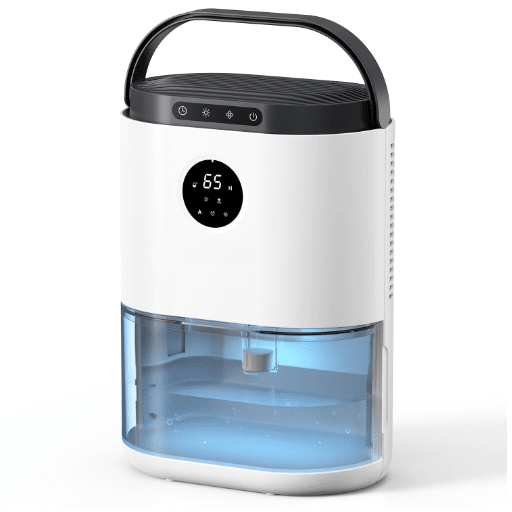
While dehumidifiers are highly effective, combining them with other methods creates a comprehensive approach to eliminating musty odors.
Increase Ventilation
Proper airflow facilitates the dispersion of potentially stinky air and ultimately helps to get rid of this type of smell.
- Use exhaust fans in bathrooms and kitchens where moisture is present
- Open windows for cross ventilation
- Install air purifiers with HEPA filters to remove odor-causing particles
Use Activated Charcoal or Baking Soda
The odor neutralizers activated charcoal and baking soda, both of which are widely used. Small opened containers should be placed in corners or areas that are especially problematic. They not only extract excess moisture but also capture odor particles, especially in tight areas like closets or basements.
Employ Enzyme-Based Cleaners
Enzyme cleaners are quite effective for their specific application—their job is to take control of the problem by breaking down the organic molecules that cause odor so that it can be completely eliminated by them. Mold and mildew are the principal reasons why musty odors come up, the experts suggest using these cleaners for carpet, fabric, and other similar surfaces that are porous.
Inspect for Water Damage
Stubborn smells might be the only indication of hidden water damage or mold infestations. Look for signs of water damage and mold growth by checking walls, floors, and ceilings for discoloration or moisture retention with a moisture meter. Water damage that has been allowed to persist will also be a source of odors that get worse over time.
Enhance Humidity Control with Smart Systems
With the recent advances in technology like smart humidity and air monitoring systems, it is now possible to have indoor air quality at a high level. Such devices can manage the moisture levels very efficiently by automatically turning off or on the dehumidifiers and fans depending on the real-time data provided.
Using Air Purifiers in Conjunction with Dehumidifiers
The use of air purifiers together with dehumidifiers could bring about a major improvement in indoor air quality as they would be working against different aspects, i.e., airborne pollutants and excess humidity.
✅ Optimal Setup:
- Set dehumidifier to maintain humidity between 30-50%
- Use air purifier with HEPA filter to clean remaining particles
- Consider smart systems that coordinate both devices automatically
- Place devices strategically for maximum coverage
Home Remedies to Get Rid of Musty Smells
Indoor spaces can get rid of musty odors by applying various home remedies with simple materials and methods:
| Remedy | How to Use | Benefits |
|---|---|---|
| Baking Soda | Sprinkle on carpets, furniture, or affected areas. Let sit for several hours, then vacuum | Neutralizes odors through absorption; safe and non-toxic |
| White Vinegar | Mix 1:1 ratio with water in spray bottle. Apply to surfaces | Antimicrobial properties kill mold and mildew at the source |
| Activated Charcoal | Place small bowls or porous pouches in problem areas | Absorbs moisture and odors; works over days/weeks |
| Essential Oils | Dilute tea tree oil in water; use in diffuser or spray bottle | Deodorizes while providing therapeutic aromatherapy benefits |
| Indoor Plants | Place peace lilies or snake plants in affected areas | Natural air purification and moisture regulation |
When to Seek Professional Help
In case you have standard cleaning methods and long-lasting measures like dehumidifiers and air purifiers in place, yet still, your place is infused with smell and mold or mildew, it is time to call in the experts.
⚠️ Warning Signs That Require Professional Intervention:
- Persistent musty odors despite using dehumidifiers and air purifiers
- Visible black mold growth
- Extensive water damage or flooding
- Health issues like constant allergies or breathing problems related to home air quality
- Structural damage to walls, floors, or ceilings
- Odors returning shortly after cleaning
Such problems are often caused by hidden structural or environmental conditions which need to be diagnosed and resolved with special skills and techniques. To locate hidden moisture, professionals make use of cutting-edge tools such as thermal imaging cameras, and they apply industrial-strength decontamination methods to remove dangerous pathogens and allergens completely.
References
-
Mold and Mildew Prevention – Marshall University Housing and Residence Life
This source highlights the role of dehumidifiers in removing excess moisture to prevent mold and mildew, which are common causes of musty smells. -
You Can Control Mold – Centers for Disease Control and Prevention (CDC)
The CDC emphasizes maintaining indoor humidity levels below 50% using dehumidifiers to control mold growth and associated odors. -
Mold and Moisture – Minnesota Department of Health
This resource explains the relationship between moisture, mold, and health issues, and stresses the importance of controlling indoor humidity.
Frequently Asked Questions (FAQ)
Will a dehumidifier assist in eliminating musty odor?
Certainly, a dehumidifier can be very effective when it comes to removing musty odors in your house. Musty odors are quite often a consequence of the presence of excessive moisture in the atmosphere, which is very conducive to the growth of mold and mildew. A dehumidifier can remove the moisture and thus lead to a significant reduction in these unpleasant odors.
In what way does a dehumidifier contribute to the overall improvement of home smell?
One of the main functions of a dehumidifier is to eliminate mold and mildew caused by the high humidity in the air. The fungi, in turn, release their spores, thus adding to the musty odors. Through the maintenance of lower humidity, a dehumidifier assures the provision of a fresh and healthy indoor atmosphere.
Do I need one in my musty basement?
If there is a musty smell coming from your basement, it may be time for you to invest in a dehumidifier. Being underground, basements are usually damp and therefore more or less always moist. A dehumidifier can not only eliminate odors coming from the moisture but also keep the moisture from coming back.
Will a dehumidifier contribute to the process of mold removal?
Indeed, using a dehumidifier can be counted among the main steps of the mold remediation process. Not just does it come out as helping with the removal of the moisture that provides the skin for growing and hiding of the fungi but also facilitates the process of drying up the previously affected area. It is indispensable in keeping your home free from mold and associated smells.
Will a dehumidifier also help with the reduction of allergens like dust mites?
Yes without a doubt! A dehumidifier decreases allergens such as dust mites, which are mainly found in humid places. By maintaining a dry indoor environment, you keep these allergens away, resulting in cleaner air and less allergy discomfort.
What is the function of a dehumidifier in the prevention of mildew through its operation?
The running of a dehumidifier is a very effective way of controlling the moisture level in the air and hence preventing the growth of mildew. Mildew needs moisture to grow, so when you take away the moisture, you not only get rid of the existing mildew but you also prevent it from coming back in your house.
Is it alright to use air fresheners alongside a dehumidifier?
While air fresheners can help conceal bad smells, they will not solve the problem of musty odours at their source. It is advisable to use the dehumidifier to draw out the moisture and then apply air fresheners to create a nice scent. This way, you are dealing with the musty smell at its source and also letting the freshness in.
In which corners of the house should I place the dehumidifier?
Run a dehumidifier in the moisture-prone areas like your basement, bathrooms, and laundry rooms. These areas are often high in humidity, and they are the likely sources of unpleasant odors and mold growth. Making sure that even the smallest of rooms are properly dehumidified will noticeably improve the overall quality of air in your house.



